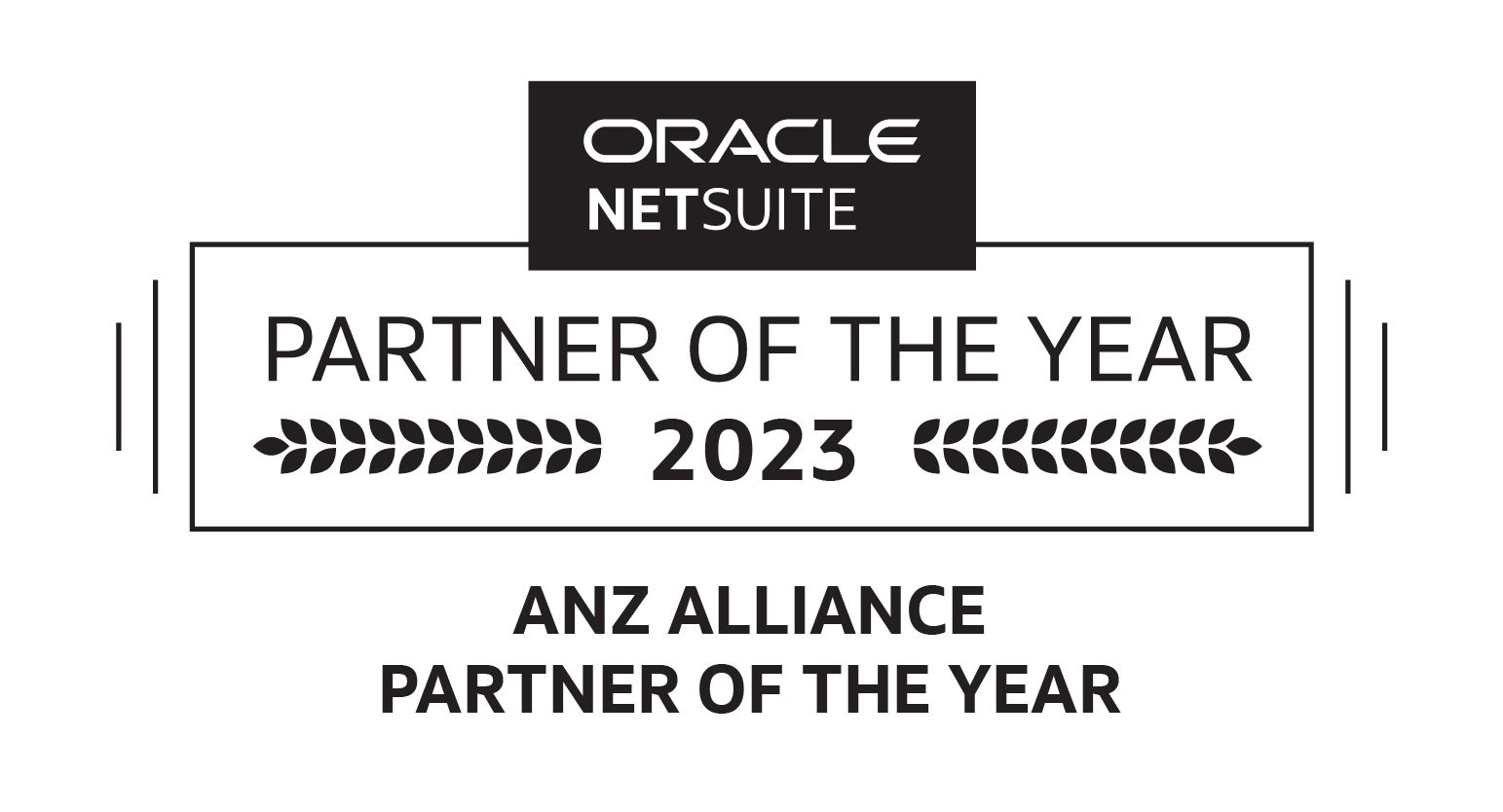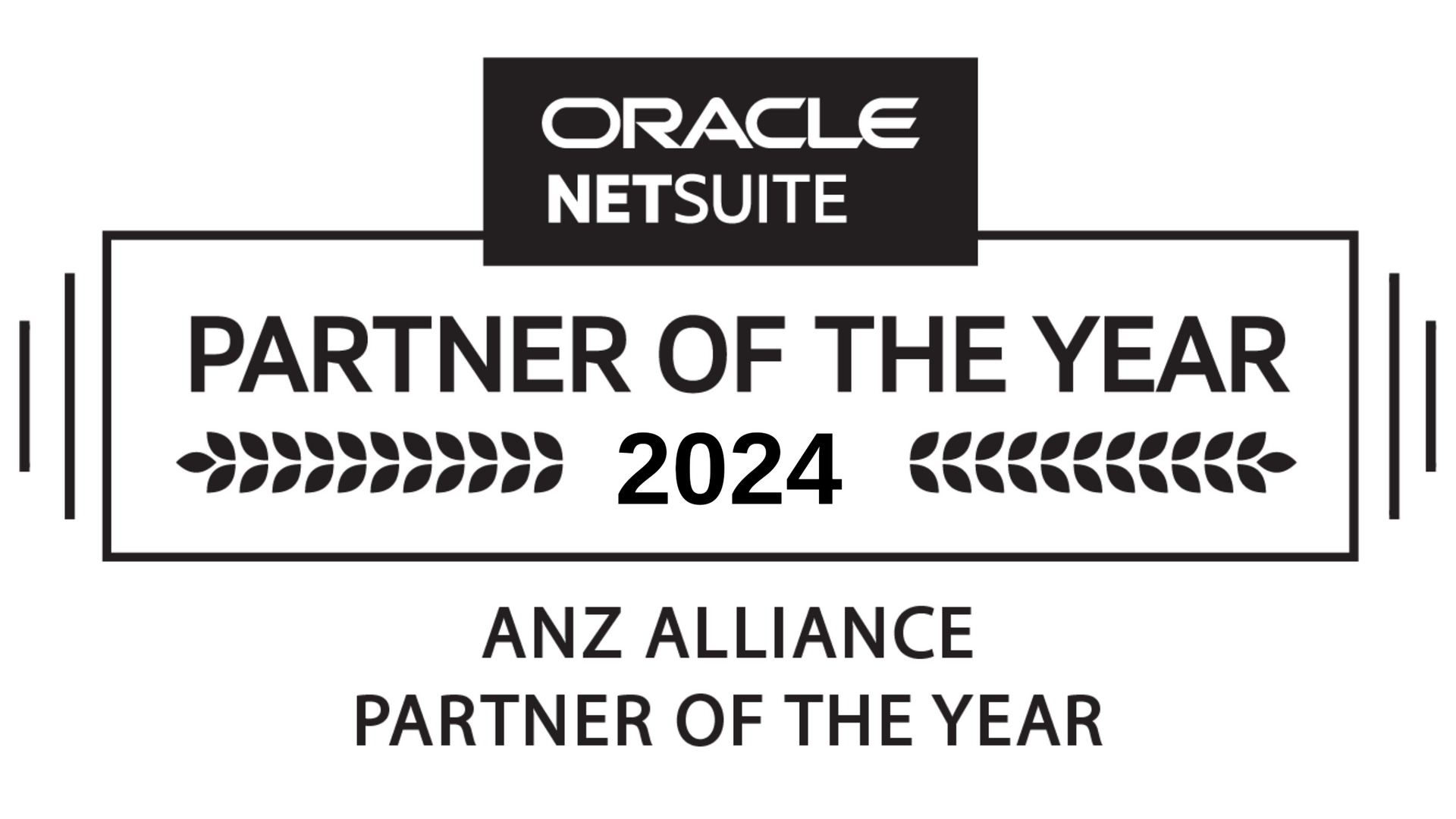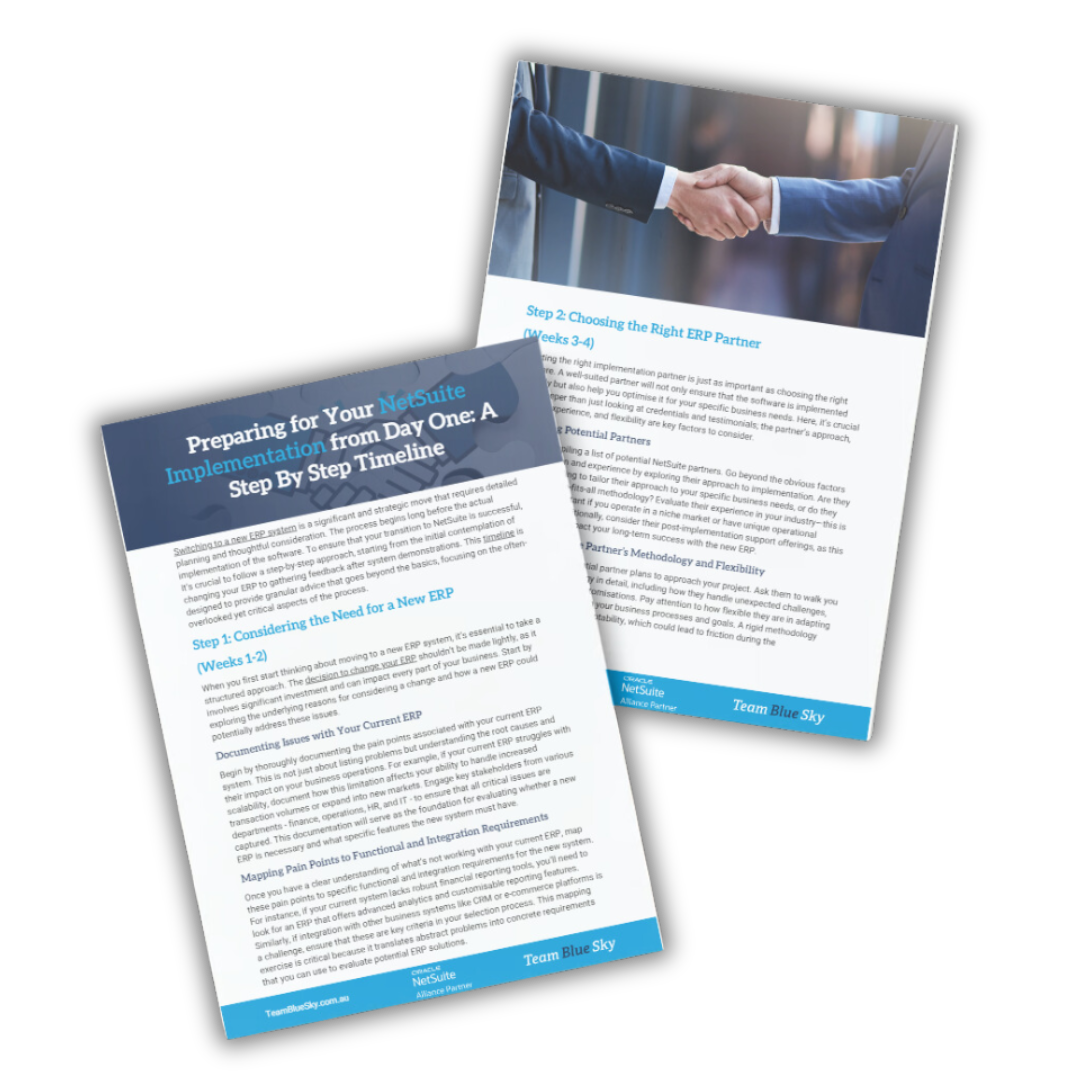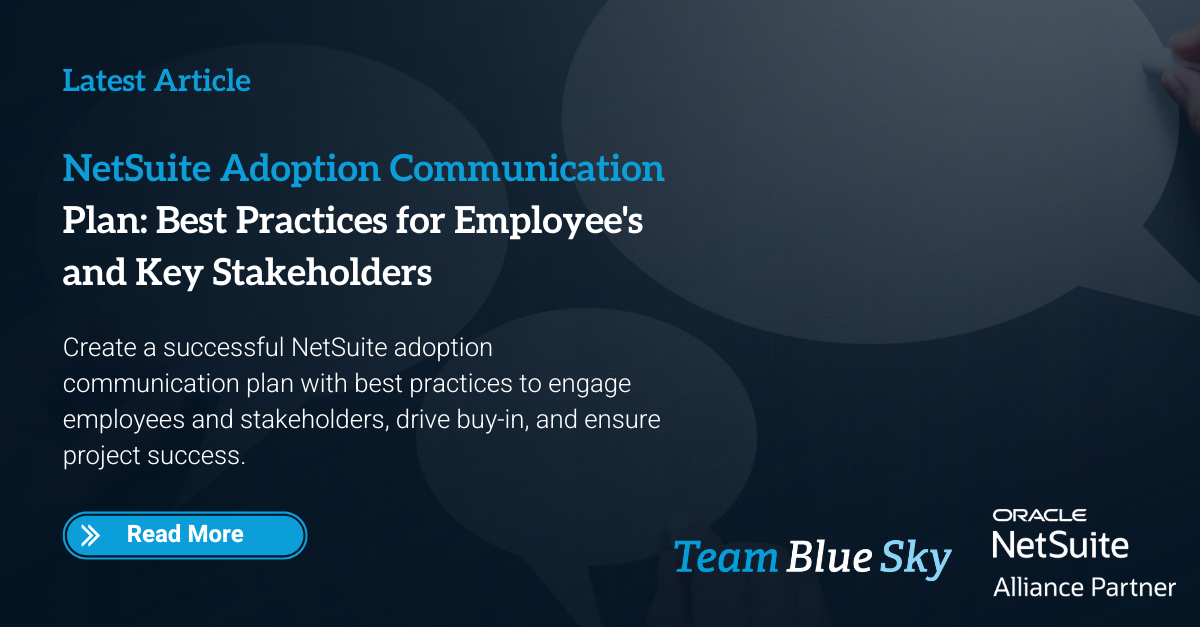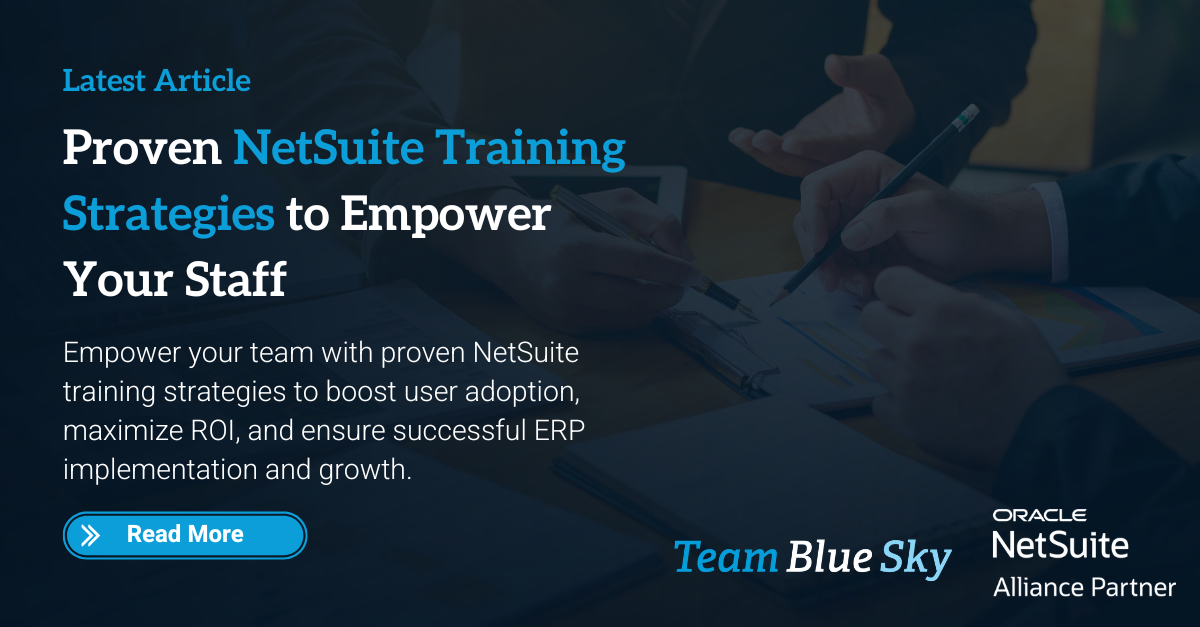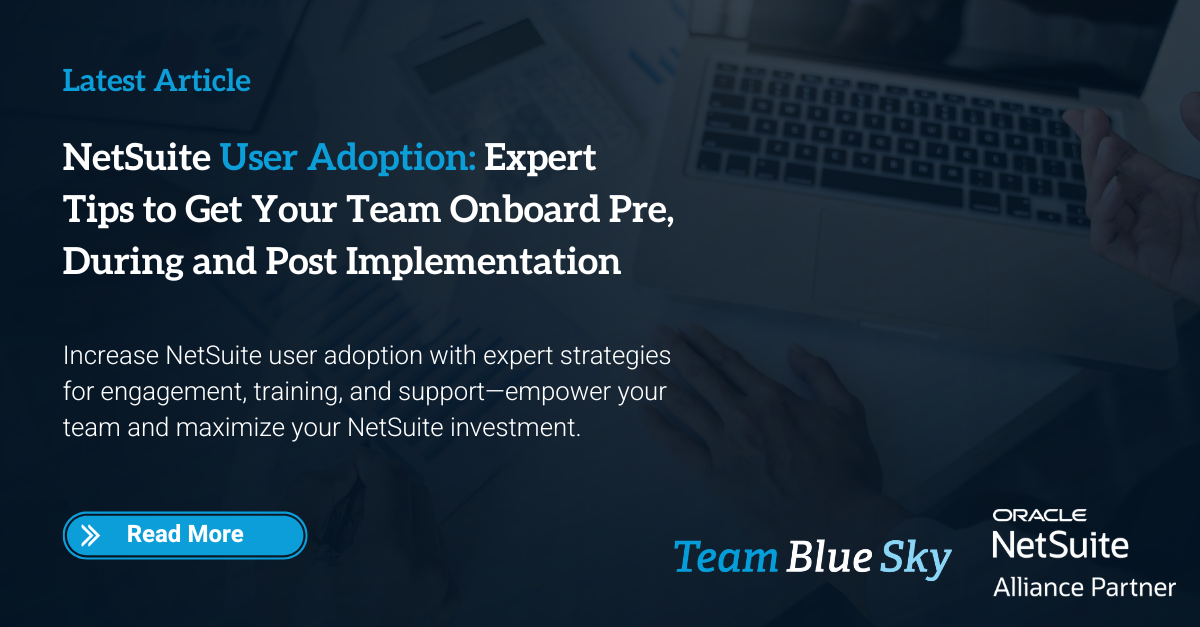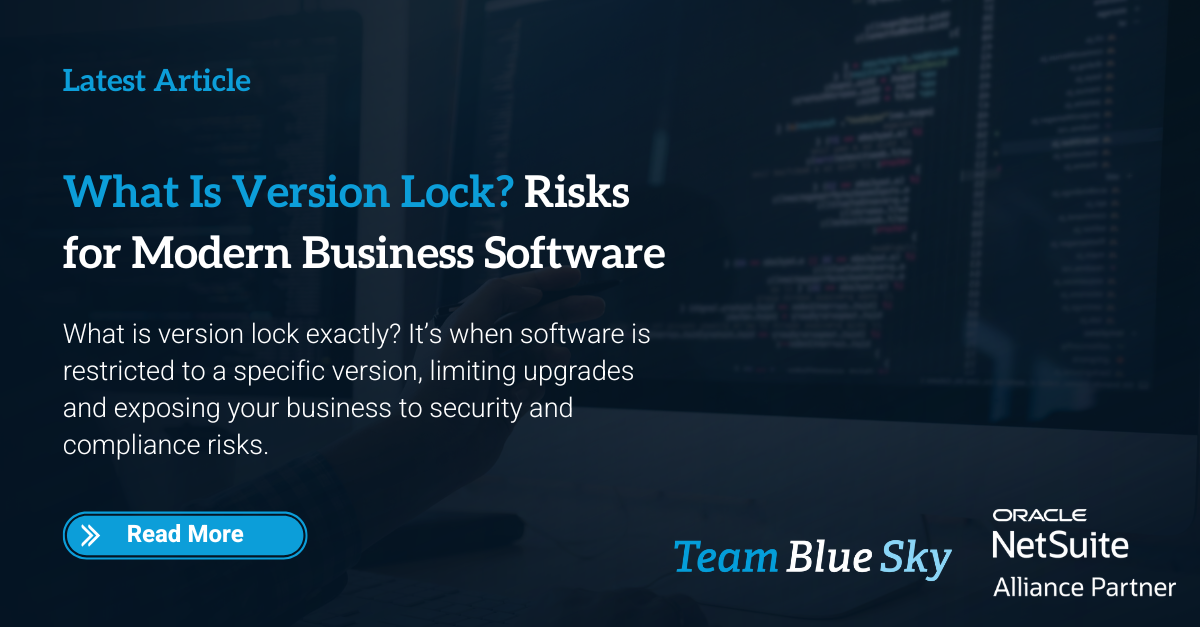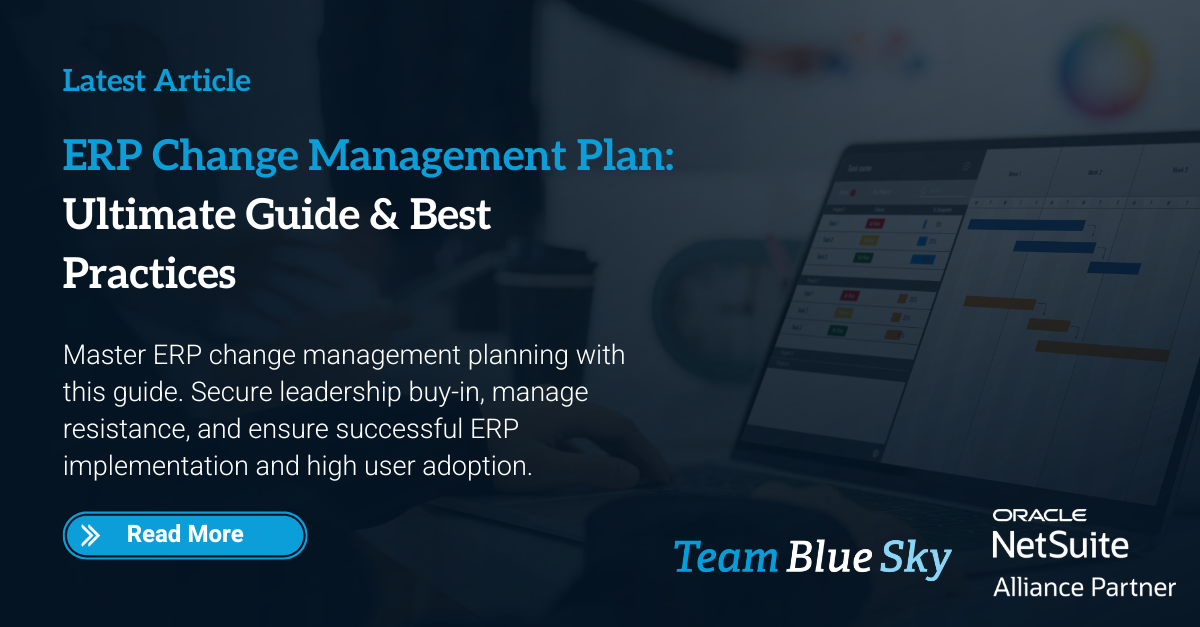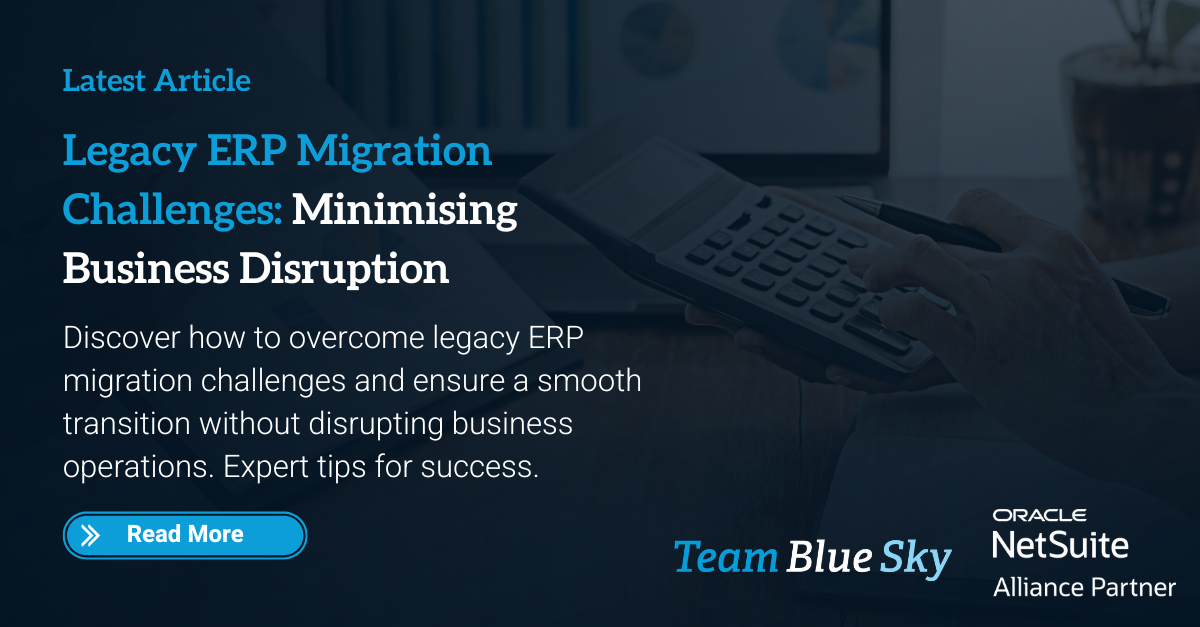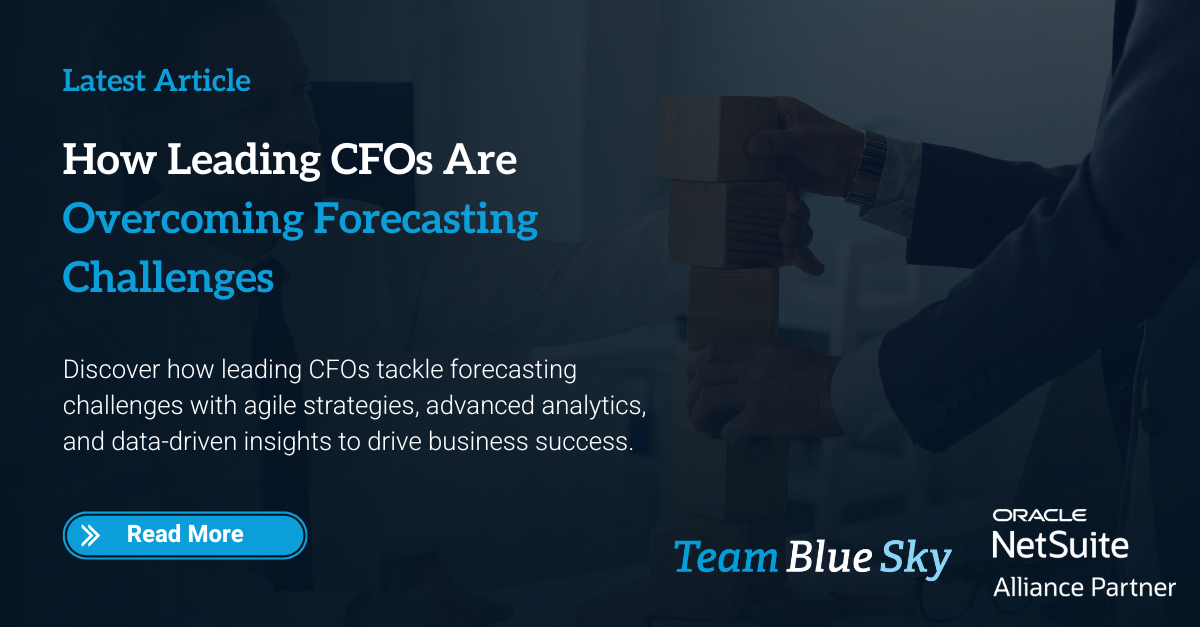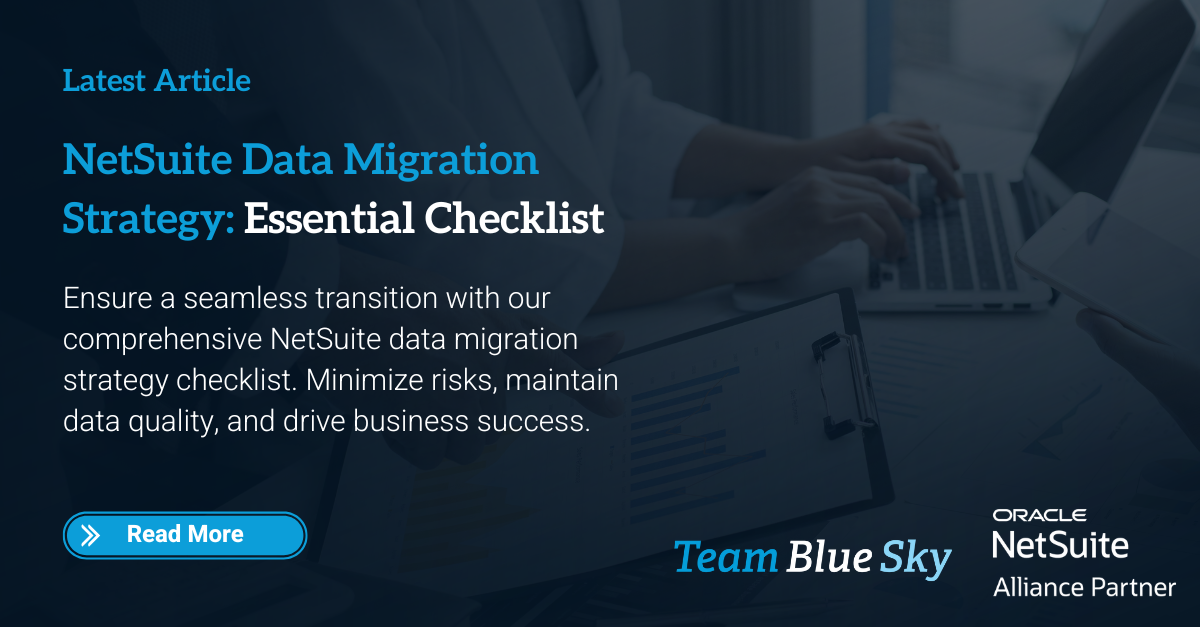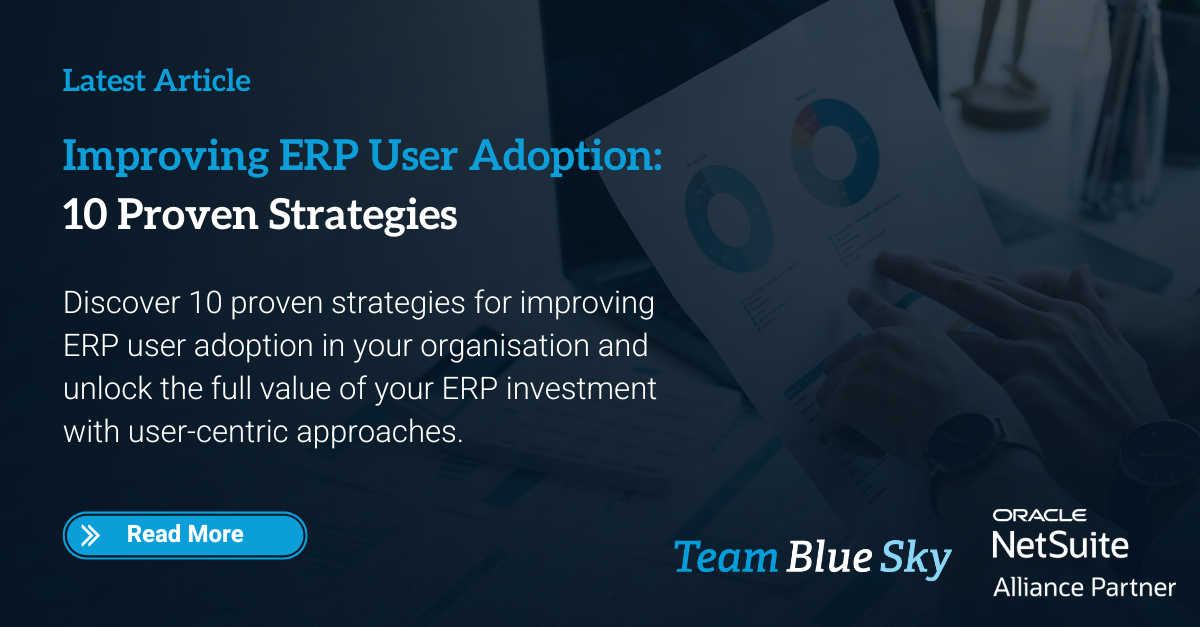Preparing for Your NetSuite Implementation from Day One: A Step By Step Timeline
Switching to a new ERP system is a significant and strategic move that requires detailed planning and thoughtful consideration. The process begins long before the actual implementation of the software. To ensure that your transition to NetSuite is successful, it’s crucial to follow a step-by-step approach, starting from the initial contemplation of changing your ERP to gathering feedback after system demonstrations. This timeline is designed to provide granular advice that goes beyond the basics, focusing on the often-overlooked yet critical aspects of the process.
Step 1: Considering the Need for a New ERP
(Weeks 1-2)
When you first start thinking about moving to a new ERP system, it’s essential to take a structured approach. The decision to change your ERP shouldn’t be made lightly, as it involves significant investment and can impact every part of your business. Start by exploring the underlying reasons for considering a change and how a new ERP could potentially address these issues.
Documenting Issues with Your Current ERP
Begin by thoroughly documenting the pain points associated with your current ERP system. This is not just about listing problems but understanding the root causes and their impact on your business operations. For example, if your current ERP struggles with scalability, document how this limitation affects your ability to handle increased transaction volumes or expand into new markets. Engage key stakeholders from various departments - finance, operations, HR, and IT - to ensure that all critical issues are captured. This documentation will serve as the foundation for evaluating whether a new ERP is necessary and what specific features the new system must have.
Mapping Pain Points to Functional and Integration Requirements
Once you have a clear understanding of what’s not working with your current ERP, map these pain points to specific functional and integration requirements for the new system. For instance, if your current system lacks robust financial reporting tools, you’ll need to look for an ERP that offers advanced analytics and customisable reporting features. Similarly, if integration with other business systems like CRM or e-commerce platforms is a challenge, ensure that these are key criteria in your selection process. This mapping exercise is critical because it translates abstract problems into concrete requirements that you can use to evaluate potential ERP solutions.
Step 2: Choosing the Right ERP Partner
(Weeks 3-4)
Selecting the right implementation partner is just as important as choosing the right software. A well-suited partner will not only ensure that the software is implemented correctly but also help you optimise it for your specific business needs. Here, it’s crucial to dig deeper than just looking at credentials and testimonials; the partner’s approach, industry experience, and flexibility are key factors to consider.
Evaluating Potential Partners
Begin by compiling a list of potential NetSuite partners. Go beyond the obvious factors like certification and experience by exploring their approach to implementation. Are they flexible and willing to tailor their approach to your specific business needs, or do they follow a one-size-fits-all methodology? Evaluate their experience in your industry—this is particularly important if you operate in a niche market or have unique operational requirements. Additionally, consider their post-implementation support offerings, as this can significantly impact your long-term success with the new ERP.
Understanding the Partner’s Methodology and Flexibility
Explore how each potential partner plans to approach your project. Ask them to walk you through their methodology in detail, including how they handle unexpected challenges, change requests, and customisations. Pay attention to how flexible they are in adapting their approach to align with your business processes and goals. A rigid methodology might indicate a lack of adaptability, which could lead to friction during the implementation.
Step 3: Understanding NetSuite Modules and Editions
(Weeks 5-6)
NetSuite offers various modules and editions designed to cater to different business sizes and industries. Understanding these options is crucial to selecting the right configuration for your company. This step goes beyond simply choosing modules based on current needs; it’s about anticipating future requirements and ensuring that the system you implement today can scale and evolve with your business.
Step 4: Scheduling and Undertaking System Demonstrations
(Weeks 7-8)
System demonstrations are a critical part of the ERP selection process. However, they often become generic presentations that don’t fully address the specific needs of your business. To make the most of these demonstrations, it’s important to prepare thoroughly and guide the process to ensure that it’s relevant and informative.
Customising Demonstrations to Your Needs
When scheduling demonstrations, insist that they be tailored to your specific requirements rather than standard, out-of-the-box presentations. Provide the vendor with detailed scenarios that reflect your daily operations and ask them to demonstrate how NetSuite would handle these scenarios. For example, if managing multi-currency transactions is crucial for your business, ask the vendor to show how NetSuite manages currency conversions, revaluations, and reporting across multiple entities. This approach ensures that you’re seeing the software in action in a way that’s directly relevant to your business.
Engaging Subject Matter Experts (SMEs)
Invite subject matter experts (SMEs) from within your organisation to participate in the demonstrations. These individuals, who are deeply familiar with specific business processes, can provide valuable insights into whether the software meets your needs. For instance, your financial controller might spot potential issues with the way NetSuite handles revenue recognition that could be missed by a more general audience. After the demonstrations, gather feedback from these SMEs to understand their concerns and whether they feel the system can effectively support their workflows.
Step 5: Gathering and Analysing Feedback Post-Demonstration
(Weeks 9-10)
After the demonstrations, it’s crucial to take the time to gather detailed feedback from all participants and analyse it thoroughly. This step is often rushed, but it’s where you can uncover potential issues and make a more informed decision.
Structured Feedback Collection
Develop a structured approach to gathering feedback from everyone who attended the demonstrations. Create a feedback form that covers key areas such as user interface, functionality, ease of use, and perceived ability to solve existing pain points. Encourage participants to provide both positive and negative feedback, and ensure that they base their comments on how well the system meets specific business requirements.
Analysing Feedback with a Focus on Business Impact
Once feedback is collected, analyse it with a focus on the business impact rather than just technical capabilities. For example, if a module seemed cumbersome during the demonstration, consider how that might affect day-to-day operations. Could it slow down critical processes or increase the learning curve for users? Balance these insights against the potential benefits of the system, and consider whether customisations or additional training could mitigate any concerns raised by the feedback.
Step 6: Making the Final Decision
(Weeks 11-12)
The final decision to move forward with a NetSuite implementation should be based on a thorough understanding of how the system will meet your business needs and the feedback from demonstrations. It’s important to weigh all factors carefully to ensure that the decision aligns with your long-term strategic goals.
Revisiting Your Initial Pain Points and Requirements
Before making the final decision, revisit the initial pain points and requirements you documented at the start of the process. Ensure that the chosen NetSuite modules, editions, and implementation partner are fully capable of addressing these needs. If there are any gaps, consider how they might be addressed through customisations, additional modules, or changes in your business processes.
Aligning the Decision with Long-Term Goals
Consider how the chosen NetSuite solution aligns with your long-term business goals. For instance, if you plan to expand into new markets or increase your product lines, ensure that the system can scale accordingly. The decision should not only solve immediate problems but also support future growth and adaptability.
Final Thoughts
Preparing for a NetSuite implementation is a complex process that requires careful consideration and detailed planning. By following this
step-by-step timeline, you can ensure that you are making informed decisions at every stage of the process. From the initial decision to explore a new ERP, through to gathering and analysing feedback after system demonstrations, each step is designed to help you avoid common pitfalls and make the most of your NetSuite investment. By focusing on the specific needs and strategic goals of your business, you can implement a solution that not only addresses current challenges but also supports long-term success.

Henry Sack
General Manager

With over 12 years of experience as a NetSuite implementation consultant, Henry Sack leads TeamBlueSky’s team of NetSuite and accounting experts in his role of General Manager.
TeamBlueSky is a leading Australian
NetSuite Alliance Partner whose mission is to provide critical
NetSuite BPO and
Payroll services to NetSuite clients who are wanting to simplify their
back office processes and partner with a leading
NetSuite administration expert.
TeamBlueSky have also partnered with global Suite Developer Network partners to offer local solutioning, implementation and support services for global NetSuite SuiteApps.


